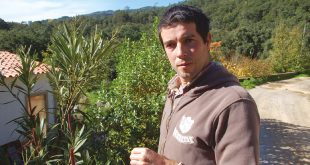ECO123 went to meet some small producers who add value to Algarve gastronomy. Through their work, regional products are turned into culinary specialities that satisfy a wide range of tastes. Fresh Algarve goat’s cheese, honey and medronho brandy are some of these traditional products that are perfect for discovering the flavours of the Algarve.
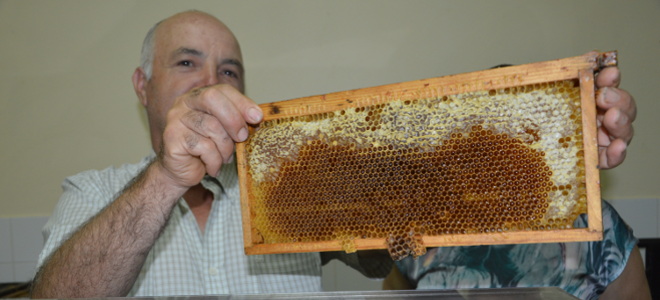
Traditional fresh cheese
The Queijaria Martins in Portela da Nave in Salir, which opened in 2009, makes fresh goat’s cheese every day. This small factory, owned by Idálio Martins, distributes its product in Salir, Messines and Loulé. Aged 33, the owner of the cheese factory says that his passion and dedication to the animals prompted him to rear a herd of 150 Algarve goats, in order to be able to produce fresh cheese later on.
The company currently has four workers. Two of them take care of the herding, and the others work in the factory and in distribution. Together they account for an annual salary bill of approximately 28,000 euros.
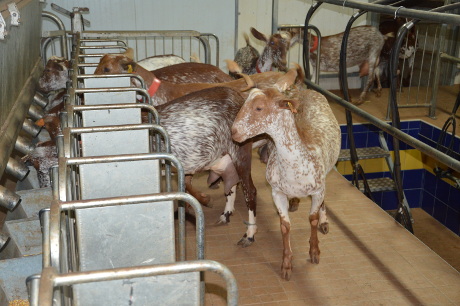
Days in the cheese factory start in the very early morning. The working day begins at 3.30 a.m. while it’s still dark, with Idálio Martins and his father preparing the herd for mechanical milking. The goats are attracted by the maize that they find in the small stalls. They automatically head for their positions where they are held for a moment or two by the neck to be pushed back until their hind part is against the wall. This is where Idálio and his father have the milking machines ready to be attached.
The goats are well used to the routine and are surprised at any change in the space. They stare fixedly at any strange figure, even just for a moment or two, before concentrating on the small feed troughs provided for them. One after the other, the goats are milked mechanically, which makes the process quicker. The goats are predisposed to this whole process, and are milked twice a day.
Once the milk is collected, it is stored in a container at about two degrees Celsius, and then is transported to the small cheese factory, just a few metres from the store. Once cooled, it is transferred to a pan, seasoned with salt and pasteurised at 90ºC. Next, an infusion of thistle flower is added, to curdle the liquid. The curd that remains is pressed to remove the whey and then shaped in small rings. The end result is cheeses weighing about 180 grams. Two hours later the cheeses are removed from the the cold to be appropriately labelled.
Idálio Martins sticks to the traditional recipe for fresh cheese which has ensured that his company has continued in operation for all these years.
Fresh cheese with flavours
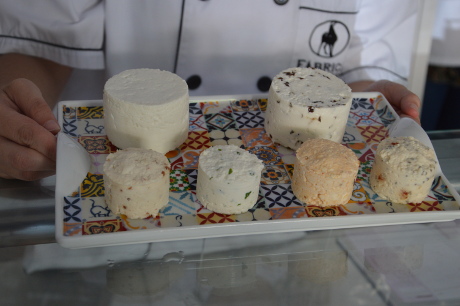
Also on the Algarve coast, in Olhão, there is a second cheese factory that sells fresh cheese every day with different flavours. Its owner, Ana Gancho, aged 34, started this business in June 2015. A zootechnical engineer trained in food hygiene and safety, she worked for several companies involved in artisan food production.
With the experience she had gained in food production, Ana Gancho decided to open her own cheese factory, given that “in Olhão there was no artisan cheese factory. If you look, you realise that most of the cheese factories are in the interior.”
However, this young woman opted to do something different, and has a number of products connected with goat’s milk in her establishment. She also sells products that can be combined with fresh cheese in one way or another. The cheeses that can be found in the shop window are produced from the milk from various goat rearing businesses in the area. This produces around 100 small goat cheeses, some based on traditional recipes, and others produced with different flavours, an innovation that has attracted the interest of the public.
Fresh cheese with honey
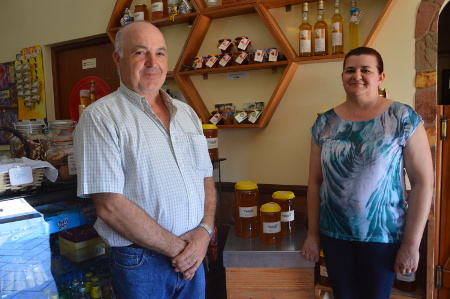
The ‘Melaria do Monte’ in Montes de Cima at the foot of the Serra de Monchique, produces honey. The company started in 2003, and is headed by Manuel Jesus and his wife Célia Jesus. Manuel Jesus has been working with bees, together with his father, since he was young. He learnt all the techniques for honey production and decided to start his own company.
The ‘Melaria do Monte’ has thousands of beehives in different parts of the eastern Algarve and southern Alentejo, and produces an average of 12 to 15 kilos of honey per hive. The harvest begins in the middle of May and ends in the middle of August. The quality of the product varies depending on the location of the hives, as, according to Manuel Jesus, “the honey is always different, in each harvest.”
The process of extracting the honey starts with fumigating the hives in the traditional manner: the smoke is produced by burning the vegetation from their land, with leaves of cistus and restharrow, among others. This has a kind of anaesthetising effect on the bees, for a few moments. The process is as uninvasive as possible, in order not to harm the bees’ cycle.
The following stage is carried out inside the factory. The hives are quickly transported to the store so that as few bees as possible enter the working area.
The next phase takes place in a large machine which, together with the power of the wind, centrifuges the honeycombs to extract the precious nectar.
After the initial centrifuging process, the honey is filtered to remove possible impurities in the product. The process is completed by storing the honey in special barrels, each weighing 300 kilos.
From “mel” to “melosa”
One of the Algarve’s specialities is the typical “melosa”, made from a medronho brandy with honey (“mel”). This blend produces a smooth, sweet alcoholic drink, much loved by the people of the Algarve and by visitors, tourists and residents from other parts of the country.
Fresh cheese with honey and medronho
António de Encarnação, aged 77 and resident in Monchique, has been making medronho brandy since he was 13. At a young age, he started helping his father in the distillery, learning all the ancestral tricks for making a good medronho.
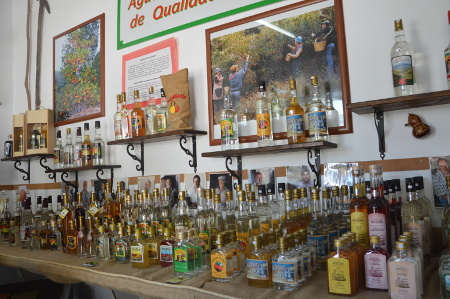
The medronho harvest starts in the middle of October. Harvesting the fruit of the strawberry tree needs a lot of care because, according to António de Encarnação, “the fruit has to be very ripe. Now there are lots of people who don’t look to see if the fruit is suitable, and it doesn’t make medronho – it makes poison.”
The red fruit is very ripe and ready to be picked. However, the berries with yellowish tones can be picked depending on their seeds. “You break the medronho berries in half. If the seeds are black, it’s good. But if the seeds are very green, then they’re not suitable,” António de Encarnação explains.
The next step is to put the medronho fruit in containers that are properly covered and kept in a cool place. The barrels have to be constantly watched to check the temperature of the product and avoid acidity in the medronho. If the medronho gets warm, the product has to be sprinkled with water in order to maintain the ambient temperature, and ensure that the fermentation process works in the proper way.
As the fruit ferments, a red paste is formed. This shows that the fermentation is ready. Then the medronho is crushed and covered with plastic. This in turn is covered with wet sand to keep it cool during the days until the next stage of the process.
About 60 to 70 days later, the product is ready for distilling. The medronho is placed in a still, on a low heat. Once it starts to boil, the lid is placed on the container. A little of the medronho is allowed to drain out of the nozzle to remove some of the impurities. Once it is well boiled, a quality medronho is obtained, well made.
Medronho should be served at room temperature, preferably after ageing for at least two years. Good medronho has the smell and flavour of the fruit, a gentle flavour, with little acidity and low levels of methanol and acetates, substances that are harmful to one’s health.
António de Encarnação recalls the time where a lot of medronho was produced, in a small distillery. He recalls that he managed to produce 12,000 litres of brandy from the bushes on a piece of land covering 175 hectares – and which is now abandoned. António de Encarnação stopped producing medronho six years ago for health reasons. And he says that, nowadays, “medronho is no longer produced like it used to be.”
APAGARBE, the Association of Medronho Brandy Producers of Western Algarve, was formed in 1985 and is based in Monchique. It is chaired by José Nunes, who agreed to give an interview to ECO123. Together with his assistant, Américo Telo, José Nunes ensures that the institution functions well.
ECO123: What is the aim of APAGARBE? How long has it been in existence?
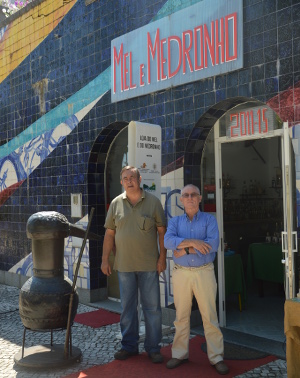
José Nunes: The association was created in 1985, and it has about 90 active members. The association has played a part in the development and the location of Monchique producers, and also in the improvement of the quality of the brandy. We have taken steps to bring together the producers’ knowledge with scientific knowledge, so all the brandies that are on display in the association’s shop have undergone analysis. With the association as intermediary, at least 50 analyses are done per year at the University of Algarve, which shows that the producers are interested in having a quality product that meets the criteria for excellent quality medronho brandy.
The brandy is a product that is regarded as expensive, in terms of the market. This comes from it requiring a lot of labour, and this is reflected in the final price, of course. But this is compensated for by the quality of the product. One of the association’s objectives is to ensure the quality of the medronho.
How does the association support producers?
The association supports producers with information, and gives administrative support and intervenes if there are problems.
What advantages are there for a producer who joins your association?
Monchique municipal council made a space available for us and we set up the shop ‘Mel e Medronho’ (Honey and Medronho). This has been a showcase for medronho, for honey, and for local confectionery and liqueurs. I think the shop has been a success, given that it has been growing since 2011. During the week, there is a member of staff in charge of the shop, and every day there’s a producer present too. Producers who ensure that the shop opens on public holidays get a bigger percentage of course.
What is the importance of having an association like this?
At present, we are the only association of brandy producers and we have 50 legalised producers in Monchique. This is partly the result of the association’s work, in order to try and improve the practice of this activity.
Does the association receive any financial support? What?
We do not receive any financial support, we just use our members’ subscriptions and the profit from our commercial activities.
Queijaria Martins
Proprietário: Idálio Martins Portela da Nave, Salir
(+351) 918 554 566
idalioramos@gmail.com
Fábrica do Queijo
Proprietária: Ana Gancho
Avenida da República, 100 Olhão
(+351) 965 116 368
Colmeia do Monte
(+351) 282 471 155
manuel_furtado@sapo.pt
APAGARBE
Sítio do Pé da Cruz, 8550-328 Monchique
www.facebook.com/apagarbe
 Eco123 Revista da Economia e Ecologia
Eco123 Revista da Economia e Ecologia



